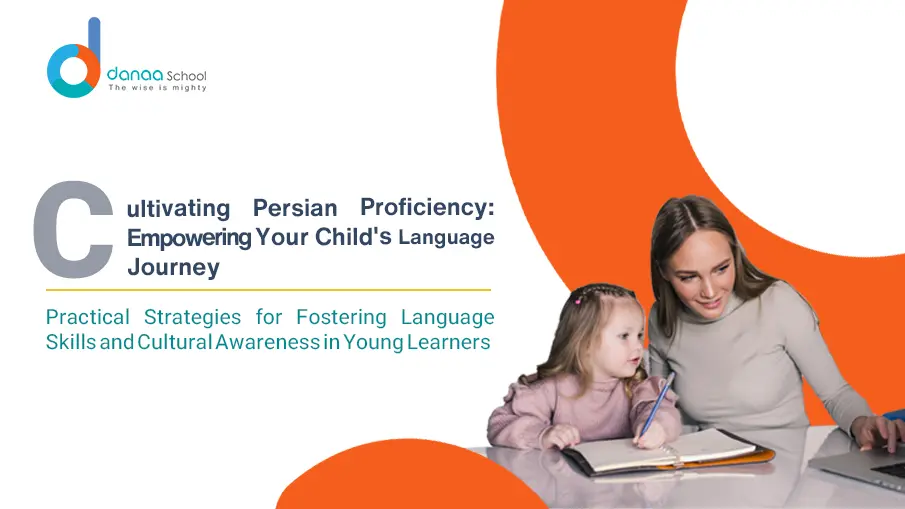4 Simple Ways to Teach Your Child Persian
Learning Persian can initially seem daunting, but it can be an enriching experience with the right approach. Here are 4 simple ways to teach your child persian.
1. Start with the Basics
Begin with the basics of the Persian language, such as the alphabet, common phrases, and simple vocabulary. You’ll build confidence and familiarity with the language by laying a strong foundation. Introduce each letter of the Persian alphabet gradually, focusing on pronunciation and writing. Practice writing simple words and sentences to reinforce learning.
2. Utilize Interactive Resources
Use interactive resources like language learning apps, online courses, and educational games. These tools make learning Persian fun and engaging, encouraging your child to practice regularly.
Choose interactive apps and games to keep children motivated and entertained while learning Persian. Set achievable goals and reward your child for their progress to maintain enthusiasm.
3. Incorporate Immersion Techniques
Immerse your child in Persian by exposing them to Persian music, movies, and children’s books. This exposure will help them become accustomed to the sounds and rhythms of the language.
Create a rich linguistic environment at home by playing Persian music, watching Persian cartoons, and reading Persian bedtime stories with your child. Encourage them to repeat phrases and sing along to Persian songs to improve their pronunciation and fluency.
4. Practice Regularly
Consistent practice is key to mastering any language. Encourage your child to practice speaking, listening, reading, and writing in Persian daily. Set aside dedicated time for language learning activities to reinforce their skills.
Create a daily or weekly schedule for practicing Persian with your child, incorporating activities like conversations, listening, and writing exercises. Make learning Persian a part of your daily routine to ensure consistent progress.
Is Persian the Easiest Language?
While Persian may have its challenges like any other language, it is relatively easy for English speakers to learn due to its phonetic nature and lack of grammatical gender. With dedication and practice, anyone can learn Farsi successfully.
Unlike languages with complex grammatical systems and irregular spelling rules, Persian follows a straightforward structure, making it accessible to learners of all ages.
What Is the Hardest Part of Learning Persian?
One of the most challenging aspects of learning Persian for English speakers is mastering the Persian script. However, with patience and persistence, learners can overcome this obstacle and become proficient in reading and writing in Persian.
The Persian script, the Persian alphabet or the Perso-Arabic script, consists of 32 letters written from right to left. Writing and recognizing Persian letters can be challenging initially but becomes easier with practice and repetition.
How Many Hours Does It Take to Learn Persian?
The time it takes to learn Persian varies depending on the learner’s proficiency level, dedication, and learning methods. Achieving basic fluency in Persian may take approximately 600-800 hours of study.
However, this timeframe can vary significantly depending on individual learning styles and language goals. Some learners may progress more quickly with intensive study, while others may require more time to reach their desired level of proficiency.
Is Persian or Turkish Harder?
Persian and Turkish have complexities, but some learners may find Turkish slightly more challenging due to its agglutinative grammar and vowel harmony system. Turkish, a Turkic language spoken primarily in Turkey and Cyprus, has a more complex grammatical structure than Persian, an Indo-European language.
However, the difficulty of learning a language ultimately depends on the individual learner’s background, linguistic aptitude, and exposure to the language.
Is Persian or Arabic Harder?
Persian and Arabic belong to different language families and have distinct grammatical structures and writing systems. Some learners may find Arabic more challenging due to its complex morphology and the use of different scripts.
Arabic, a Semitic language spoken worldwide, has a rich literary tradition and a complex system of verb conjugations and noun declensions. On the other hand, Persian is known for its poetic beauty and relatively straightforward grammar.
Is Iranian a Hard Language to Learn?
Iranian Persian, the standard Persian spoken in Iran, is relatively easy to learn. With dedication and practice, learners can achieve proficiency in Iranian Persian. While Persian may have its challenges, such as the Persian script and unfamiliar vocabulary, it is considered one of the easier languages for English speakers to learn. With the right resources and support, learners can overcome obstacles and become fluent in Iranian Persian.
Is Hebrew or Persian Harder?
Both Hebrew and Persian have unique features that may pose challenges for learners. However, many learners find Persian easier to pronounce and grasp than Hebrew, which has a more complex consonantal system. Hebrew, a Semitic language spoken primarily in Israel, has a rich literary tradition and a unique writing system consisting of consonantal characters.
On the other hand, Persian is written in the Persian script, which is based on the Arabic script but has additional letters and diacritics.
Is It Easier to Learn Russian or Persian?
The ease of learning Russian versus Persian depends on the learner’s native language, linguistic background, and personal preferences. Some learners may find Persian easier due to its phonetic nature, while others may prefer the structured grammar of Russian.
Russian, a Slavic language spoken across Russia and other Eastern European and Central Asia countries, has a complex system of verb conjugations and noun declensions. On the other hand, Persian has relatively straightforward grammar and pronunciation, making it accessible to learners of all levels.
Why Danaa School?
Danaa School is committed to preserving and promoting the rich cultural heritage of Persian literature. With a curriculum designed to inspire and educate, Danaa School allows students to explore the world of the Persian poetry and discover the profound wisdom and beauty contained within.
Through engaging lessons, interactive activities, and immersive experiences, Danaa School students learn about the legendary Persian poets and develop a deeper appreciation for the cultural heritage that continues to shape their identity and worldview.
FAQs
How long does it take for a child to learn Persian?
The time it takes for a child to learn Persian varies depending on their age, exposure to the language, and individual learning pace. With consistent practice and immersion, children can quickly develop Persian proficiency. However, it’s important to remember that language learning is gradual; each child learns at their own pace.
Can I teach my child Persian if I'm not fluent in it?
Yes, you can still teach your child Persian even if you’re not fluent. Utilize resources like language learning apps, books, and online courses to support your child’s learning journey. You can learn alongside your child and explore the language together, creating a fun and immersive learning environment at home.
Is it better to start teaching Persian to a child at a young age?
While there’s no definitive age at which to start teaching Persian, younger children tend to pick up languages more easily due to their cognitive development. However, it’s never too late to start learning Persian, and learners of all ages can achieve fluency with dedication and practice. The key is to make language learning enjoyable and engaging for your child, regardless of age.
Are there any benefits to learning Persian as a second language?
Learning Persian opens up a world of cultural, social, and professional opportunities. It allows individuals to communicate with Persian speakers, access Persian literature and media, and gain insights into Persian culture and history. Learning Persian can also enhance cognitive skills such as problem-solving, critical thinking, and creativity, making it a valuable asset in today’s globalized world.
How can I maintain my child's interest in learning Persian?
To keep your child motivated and engaged in learning Persian, incorporate fun and interactive activities into their language learning routine. Celebrate their progress, explore Persian culture together, and encourage them to use Persian in real-life situations. Create opportunities for your child to interact with native Persian speakers through language exchange programs, cultural events, or online communities. Making language learning a positive and enjoyable experience can help your child stay motivated and enthusiastic about learning Persian.
Can adults learn Persian using the same methods as children?
While children and adults may approach language learning differently, many of the same techniques can be effective for learners of all ages. Adults may benefit from more structured lessons and additional resources tailored to their learning styles and goals. However, incorporating immersive activities, interactive resources, and regular practice can help adults learn Persian effectively.
Are there any online communities or forums for Persian language learners?
Several online communities and forums exist where Persian language learners can connect, ask questions, and share resources. Platforms like Reddit, Facebook groups, and language learning forums often have dedicated sections for Persian learners. These communities provide valuable support, encouragement, and opportunities for language practice and cultural exchange.
Conclusion
In conclusion, teaching your child Persian can be a fulfilling journey that opens doors to new cultures and opportunities. Following these simple tips and staying consistent with practice can help your child become proficient in Persian quickly.
Nurture your language skills with Danaa School’s fantastic Farsi program! Our engaging curriculum is tailored for young learners, making Farsi learning enjoyable and effective. With fun activities and experienced teachers, we create a supportive environment. Join us.







